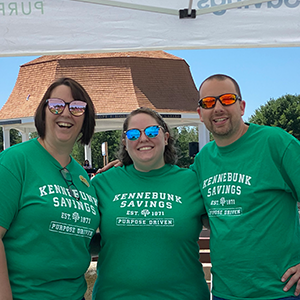
One question we get a lot at Kennebunk Savings Insurance is: “Why are car insurance rates so high or getting higher?” It’s a fair question. Yes, rates do tend to inch up incrementally every year, but sometimes for good reason.
We’re always looking for ways to save customers money and that includes analyzing their driving records, watching driving trends, or keeping an eye on new technology added to new cars every year. Here are four reasons why rates seem to go up and what you can do to prevent an increase or at least keep your rates stable.
Cars are just more expensive these days
Think back to that first car you bought with your own money. In the late 1990s, cars were typically in the $18,000 – $28,000 range. Nowadays, most new cars start at $25,000 just for a mid-level purchase and can soar up to $50,000 pretty quickly. So, how does that shiny new $50,000 car affect your rates?
“If a carrier’s going to insure a car that used to cost $20,000, but now costs $50,000, there’s only one way the premium can go—and that’s up,” says Danny Edgecomb, President, Kennebunk Savings Insurance.
Technology enhancements are the primary culprits.
Every time you buy a new car with all that technology, a dented fender or even a smashed headlight from a small collision is going to cost more to replace and can cause your rates to go up. What used to be an $800 job including parts, now could get close to $3,000 with the extra time in labor and delicate technology needed to be repaired or removed. Advice from Edgecomb? “Keep your hands on the wheel and keep your eyes on the road to avoid getting into that fender-bender. It sounds cliché but small accidents are costing a lot more money these days and they are driving up rates.”
You might not be ‘bundling’
Bundling is just what it sounds like and if you’re not doing it, you might be losing money. Having your insurances together, like vehicle and homeowners insurance with the same carrier, can result in savings. Many times customers are focused on shopping just for car insurance only. However, when you bundle your home and auto together, you may get anywhere between a 10% and 20% discount on your policies. You may also want to consider adding an umbrella policy, which will provide an extra layer of protection to you. Many times the umbrella policy can be paid for with the savings you achieved from bundling.
“By the time you bundle or place your policies with one carrier, that umbrella policy may end up not adding to your total cost because of the amount of discounting that occurs on both the home and the auto, plus you have all that extra coverage,” says Edgecomb.
Increased distractions on the road
Let’s not sugarcoat it: texting while driving is extremely dangerous, distracting, and is the cause of numerous accidents. How many? The National Safety Council reports that cell phone use while driving leads to 1.6 million crashes each year.
Getting into an accident or collision while distracted is going to cost you money in repairs and it will make your rates go up.
Texting while driving is a fairly new menace on the road. Besides putting your phone down, always obey the speed limits, know the rules of the road, and be courteous. “It goes beyond increased rates and personal safety, too. Being a thoughtful and safe driver is good for the community,” says Edgecomb.
Your record might be less than stellar
Tickets. They happen to the best of us. Maybe you were speeding, or distracted by reading an address on the way to a job interview. Regardless, if you get a ticket, your rates will usually go up.
Just one violation could increase your insurance rates up to 25%. Drivers with tickets have proven to also be more expensive for insurance carriers. If someone with several tickets goes shopping for a lower rate, they’re going to find similar rates with other carriers.
“Your driving record is your driving record, and a good driving record is the best way to keep your rates low,” says Edgecomb. “Regardless of your record though, we work with all of our customers to find the best policy for them at a rate that works for them. We’re here to help, provide guidance and help you get into the best situation possible.”
Shopping for insurance? We have the insight and knowledge to help you find the best policy—and rates— for you and your family. Let us know how we can help!


